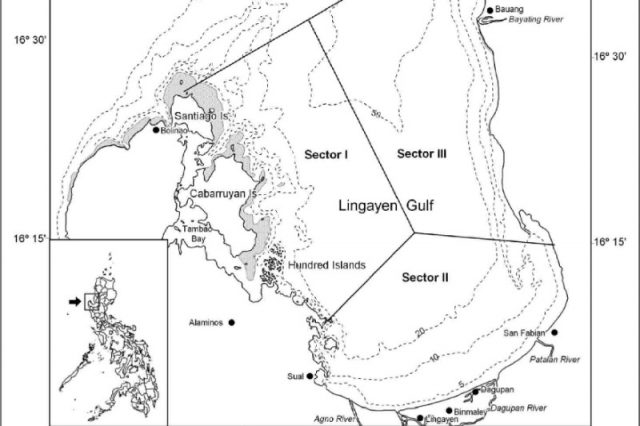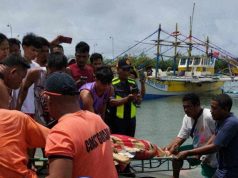An institute of marine research called for the protection of the Lingayen Gulf in northwestern Luzon amid the proposed offshore mining project set to start next year.
Reports said Palace approved it under the Financial or Technical Assistance Agreement No. 07-2020-IOMR last November.
This project aims to extract five million tons of magnetite per year for 25 years from the gulf.
In a statement written by Marine Science Institute Faculty on November 15, the University of the Philippines Marine Science Institute (UPMSI) stressed that the negative effects of mining magnetite in the gulf outweighs the supposed benefits it will bring to the people.
“Seabed magnetite mining threatens Lingayen Gulf. The proposed mining project plans to start in the second half of 2022 and is targeted to last 25 years. The negative impacts on natural resources, coastal communities and their livelihood, and even on tourism may last beyond the life of the project, and could be irreversible,” the institute said.
The UPMSI also said that mining the gulf will only benefit those who will profit from it.
“It will only serve the short-term interests of those who will profit from a misguided development that threatens the lifeblood of Pangasinan and La Union. The UP Marine Science Institute supports the people of Lingayen Gulf in protecting the habitats and resources of the Gulf for current and future generations,” it said.
The offshore mining project called the “Iron Ore Pangasinan Offshore Magnetite Mining Project” is helmed by an Australian company called Iron Ore, Gold, and Vanadium Resources (Phils) Inc.
The gulf is a 56-km stretch of inlet that covers coastal towns in Pangasinan and La Union.
The Pambansang Lakas ng Kilusang Mamamalakaya ng Pilipinas (Pamalakya)-Central Luzon and some fisherfolk in Pangasinan also voiced strong opposition against this mining plan.
The possible consequences
According to the marine research institute, the gulf is a major fishing ground for both municipal and commercial fishing communities because of its rich marine biodiversity.
In 2019, total production from its aquaculture industry reached staggering figures—16,280 metric tons worth P1.792 billion for Pangasinan and 3,602 metric tons worth P458 million for La Union.
UPMSI also noted that thousands of Filipinos are engaged in fisheries and fishing-related activities in both provinces, citing data from the Bureau of Fisheries and Aquatic Resources (BFAR).
“These include capture fishing, aquaculture, gleaning, fish processing, and other related activities. Given these services, any intense extractive, and manipulative activities in Lingayen Gulf could severely affect the fisheries that thrive on ecosystems in the Gulf as well as the livelihood of fishing families there,” it said.
The UPMSI also detailed the effects of extracting seabed magnetite on organisms, the seafloor and the surrounding waters in the Lingayen Gulf.
Effects on benthic community and seafloor
The activity will lead to potential damage of the gulf’s seabed and affect organisms such as oysters (talaba), scallops (kabibi), and sea cucumbers (balat).
“This was seen in an offshore mining of placer gold in Alaska that significantly reduced benthic macrofauna such as molluscs and echinoderms. And even if recovery of benthic organisms is possible, this will depend on the degree and duration of the sediment alteration,” the UPMSI said.
Effects on the water column
Mining process of suctioning and discharge of materials close to the seabed can re-suspend “bottom sediments,” according to the UPMSI.
“The seabed sediments when resuspended are likely to remain afloat in the water column. This will cause an increase of turbidity in the water column, which in turn will decrease light penetration and thus reduce photosynthetic activity of phytoplankton resulting in lower primary productivity,” it said.
Moreover, it can also cause release some harmful organic materials from the bottom into the water column and contaminate marine creatures and other organisms.










